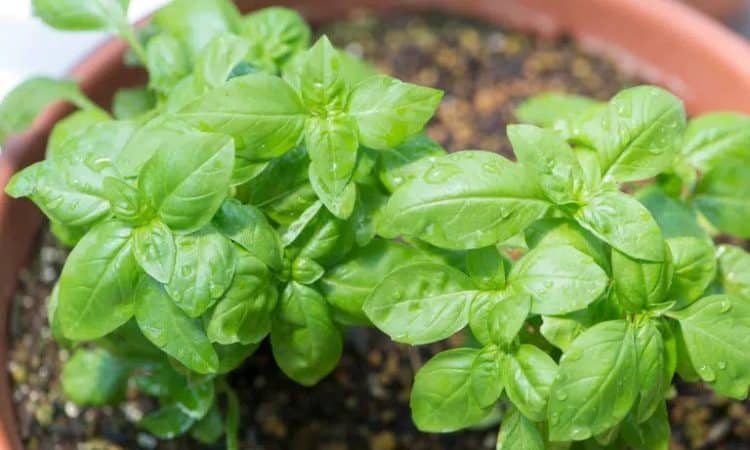
With the return of warmer weather, we’re once again enjoying the pleasure of basil perfuming our kitchens and balconies. An aromatic plant that is an essential ingredient in many summer recipes, potted basil requires special care to ensure it thrives. Follow our advice to keep your potted basil alive and thriving, and enjoy its aromas all summer long.
Advantages of potted basil
Having potted basil means you can enjoy its fresh, intense aroma right in your kitchen, perfect for enriching your summer dishes. Growing this plant in pots makes it easier to maintain and manage watering, avoiding problems with root rot. What’s more, potted basil adds an aesthetic, green touch to your indoor or outdoor spaces, contributing to a pleasant, natural ambience.
Positioning your potted basil
Basil is a light-loving plant, but take care not to expose it to direct sunlight, especially during the hottest hours of the day.
Placed in a well-lit spot, your basil will make the most of the sunshine it needs to grow. Here are a few ideas to help you find the ideal spot:
- In the kitchen, near a window that receives indirect light.
- On a balcony, but away from strong winds and direct sunlight.
- Outside, on a window sill, making sure it’s not exposed to draughts.
Do not place a dish under the pot, as water could stagnate and cause root rot.
Watering potted basil correctly
The importance of watering for basil
Basil needs constantly moist soil. It is therefore essential to manage watering.
The substrate should be watered regularly, but moderately to avoid waterlogging, which could harm the roots. Choose a pot with holes for good drainage, and add a bed of gravel or clay balls to the bottom.
Tips for optimal watering
Here are a few tips for maintaining ideal hydration:
- Water basil daily, especially during the hottest periods.
- Avoid wetting the leaves to prevent fungal diseases.
- Use a fine-spouted watering can to control the amount of water poured.
Over-watering can cause root rot. Strict control of soil moisture is therefore imperative.
Care for your basil to encourage growth
Basil pruning and branching
To encourage generous growth of your potted basil, regularly prune the ends of the stems. This technique stimulates branching and enables the plant to become bushier and produce more leaves.
Here’s how to do it:
- Use clean scissors to trim stem ends.
- Carry out this operation every two weeks or so.
- Pinch off the flowers as soon as they appear to focus the plant’s energy on leaf production.
Storing basil after cutting
If you’ve cut basil leaves but don’t want to use them immediately, it’s vital to store them well.
There are several ways to keep your leaves fresh:
- Place them in an airtight bag in the fridge.
- Use ice cube trays: fill the trays with water and place the basil leaves in them before freezing.
When you need them, simply defrost the ice cubes.
Preventing common pot basil problems
Disease and pest control
Basil can be susceptible to certain diseases and pests. Here’s how to prevent them:
- Don’t wet the leaves during watering to avoid fungal diseases.
- Check the plant regularly for parasites such as aphids.
- Use insecticidal soap in case of infestation.
Managing deficiencies and excesses
Potted basil can also suffer from nutrient deficiencies or excesses. A good choice of potting soil and balanced fertilizer will help maintain the plant’s health.
Here are a few signs to watch out for:
- Nitrogen deficiency: yellow leaves and slow growth.
- Excess water: rotting foliage and limp roots.
- Lack of branching: slender plants with few leaves.

